SolvNet
DesignWare
Documentation Overview
Installation Guide
Release Notes
Databook
User Guide
Contents
Revision History
Preface
1 Product Overview
1.1 General Product Description
1.1.1 System-Level Block Diagram
1.1.2 Interfaces
1.2 DWC_ether_qos Features
1.2.1 Standard Compliance
1.2.2 MAC Features
1.2.2.1 MAC Tx and Rx Features
1.2.2.2 MAC Tx Features
1.2.2.3 MAC Rx Features
1.2.3 Transaction Layer (MTL) Features
1.2.3.1 MTL Tx and Rx Common Features
1.2.3.2 MTL Tx Features
1.2.3.3 MTL Rx Features
1.2.4 DMA Block Features
1.2.5 AHB Interface
1.2.5.1 AHB Master Interface Features
1.2.5.2 AHB Slave Interface Features
1.2.6 AXI Interface
1.2.6.1 AXI Master Interface Features
1.2.6.2 AXI Slave Interface Features
1.2.7 AMBA APB Slave Interface Features
1.2.8 Audio and Video Features
1.2.9 Data Center Bridging Features
1.2.10 Time Sensitive Networking Features
1.2.11 Generic Queuing Features
1.2.12 Automotive Safety Features
1.2.13 Monitoring, Testing, and Debugging Features
1.3 DWC_ether_qos Configurations
1.3.1 Configurable Features
1.4 DWC_ether_qos Deliverables
1.5 Related Synopsys Products
2 Architecture
2.1 CSR Slave Interface
2.1.1 AHB Slave Interface
2.1.1.1 AHB Slave Port Timing
2.1.1.2 Interfacing AHB Slave Port with a Wider AMBA Bus
2.1.2 AXI Slave Interface
2.1.3 APB, APB3, and APB4 Slave Interface
2.1.3.1 APB Port Timing
2.1.3.2 APB3 Port Timing
2.1.3.3 APB4 Port Timing
2.1.4 MAC Control Interface
2.1.4.1 MCI Port Timing
2.2 Application Master Interface
2.2.1 AHB Master Interface
2.2.1.1 AHB Master Interface Features
2.2.1.2 Burst Length Modes
2.2.1.3 Aligning AHB Burst Transfers to An Address Value
2.2.1.4 AHB Memory Read
2.2.1.5 AHB Memory Write
2.2.1.6 Early Burst Termination
2.2.1.7 Error Response and Fatal Bus Error Interrupt
2.2.1.8 Split or Retry Response
2.2.1.9 Descriptor Write Back
2.2.2 AXI Master Interface
2.2.2.1 Burst Splitting and Burst Selection
2.2.2.2 INCR Burst Type
2.2.2.3 INCR_ALIGNED Burst Type
2.2.2.4 Outstanding Transactions
2.2.2.5 Priority of AXI Requests
2.2.2.6 Bursts Reordering and Data Interleaving
2.2.2.7 AXI-ID Translation
2.2.2.8 Endianess Support
2.2.2.9 Posted Writes
2.2.2.10 Error Response Handling
2.2.2.11 AXI Memory Read
2.2.2.12 AXI Memory Write
2.2.2.13 AXI Early Burst Termination
2.2.3 AXI4 Master Interface
2.2.4 AXI Low-Power Interface
2.2.4.1 AXI System Initiated Low-Power Entry
2.2.4.2 Automatic AXI Low-Power Entry
2.2.4.3 Coming Out of Low-Power Mode
2.3 DMA Controller
2.3.1 DMA Application Bus Burst Access
2.3.1.1 DMA Application Data Buffer Alignment
2.3.1.2 DMA Buffer Size Calculations
2.3.1.3 DMA Arbiter (EQOS-DMA and EQOS-AHB Configurations)
2.3.1.4 DMA Start/Stop Control Through Sideband Signals
2.3.2 Transmission
2.3.2.1 Transmit DMA Operation: Default (Non-OSP) Mode
2.3.2.2 DMA Transmit Operation: OSP Mode
2.3.2.3 Transmit Packet Processing
2.3.2.4 Transmit Polling Suspended
2.3.2.5 DMA Transmit Channel Arbitration
2.3.3 DMA Receive Operation
2.3.3.1 Receive Descriptor Acquisition
2.3.3.2 Receive Packet Processing
2.3.4 Error Response to DMA
2.3.5 DMA Native Interface
2.3.5.1 Write Data Transfer
2.3.5.2 Read Data Transfer
2.3.5.3 Data Transfer With Error
2.4 MAC Transaction Layer
2.4.1 Transmit Path
2.4.1.1 Transmit Control Word
2.4.1.2 Transmit Operation
2.4.1.3 Initialization Flow
2.4.1.4 Data Flow Between DMA and MTL
2.4.1.5 Transmit Status Word
2.4.1.6 Transmit Path Timing
2.4.2 Receive Path
2.4.2.1 Receive Operation
2.4.2.2 Threshold Mode
2.4.2.3 Store-and-Forward Mode
2.4.2.4 Multi-Packet Receive Operation
2.4.2.5 Error Handling in Receive Operation
2.4.2.6 Receive Status Word Format
2.4.2.7 Receive Path Timing Diagrams
2.4.3 Interfacing With External Two-Port RAMs
2.4.3.1 Low-Power, Synchronous Two-Port SRAM Connection
2.4.3.2 High-Speed, Synchronous Two-Port SRAM Connection
2.4.4 SPRAM Interface
2.4.4.1 Data Flow
2.4.4.2 Application Clock Frequency Requirements for Memory Transfers
2.4.4.3 SPRAM Timing
2.5 MAC
2.5.1 MAC Transmission
2.5.1.1 Transmit Bus Interface Module
2.5.1.2 Transmit Packet Controller Module
2.5.1.3 Transmit Protocol Engine Module
2.5.1.4 Transmit Module
2.5.1.5 Transmit CRC Generator Module
2.5.1.6 MAC Transmit Flow Control Module
2.5.2 MAC Transmit Interface Protocol
2.5.3 MAC Transmit Timing
2.5.3.1 MAC Transmit Interface (MTI)
2.5.3.2 MTI With Timestamp Feature
2.5.3.3 Collision During Transmission
2.5.3.4 Underflow During Transmission
2.5.4 MAC Reception
2.5.4.1 Receive Protocol Engine Module
2.5.4.2 Receive CRC Module
2.5.4.3 Receive Packet Controller Module
2.5.4.4 Receive Flow Control Module
2.5.4.5 Receive Bus Interface Unit Module
2.5.4.6 Address Filtering Module
2.5.5 MAC Receive Interface Protocol
2.5.6 MAC Receive Timing
2.5.6.1 MAC Receive Interface (MRI)
2.5.6.2 Packet Reception With Timestamp Feature Enabled
2.5.6.3 Packet Transmission and Reception
2.6 Interrupts
2.6.1 Interrupts from the MAC
2.6.2 Interrupts from MTL
2.6.3 Interrupts from DMA
2.6.3.1 Periodic Scheduling of Transmit and Receive Interrupt
2.6.3.2 Per Channel Transfer Complete Interrupt
3 VLAN and Double VLAN Insertion, Deletion, Replacement and Tagging
3.1 Double VLAN Processing
3.1.1 Description of Double VLAN Processing
3.1.1.1 Transmit Path
3.1.1.2 Receive Path
3.1.2 Double VLAN-Related Registers
3.1.3 Enabling Double VLAN Processing
3.2 Source Address and VLAN Insertion, Replacement, or Deletion
3.2.1 Description of SA and VLAN Insertion, Replacement, or Deletion
3.2.2 Enabling SA and VLAN Insertion, Replacement, or Deletion
3.2.3 Programming Source Address Insertion or Replacement
3.2.4 Programming VLAN Insertion, Replacement, or Deletion
3.3 Queue/Channel Based VLAN Tag Insertion on Tx
3.3.1 Accessing Queue/Channel Specific VLAN Tag Registers
3.3.2 Enabling Queue/Channel Based VLAN Tag Insertion on Tx
3.3.3 Programming Guidelines for Channel Based VLAN Tag Insertion
4 Managing Buffers and Memories
4.1 Introduction to Transmit and Receive FIFOs
4.2 Description of Transmit and Receive FIFOs
4.3 Transmit and Receive FIFO-Related Registers
4.4 Configuring Transmit and Receive FIFO Details
4.5 TCP/IP Header Buffer
4.6 Accessing Memory In Slave/Debug Mode
4.6.1 Enabling Memory Access in Slave/Debug Mode
4.6.2 Sending or Receiving a Packet through a Slave Interface
4.6.2.1 Transmitting Packets through a Slave Interface
4.6.2.2 Receiving Packets through a Slave Interface
4.6.3 Operating in Debug Mode
4.6.3.1 Writing to FIFO Memory in Debug Mode
4.6.3.2 Reading from FIFO Memory in Debug Mode
5 Using PHY Interfaces
5.1 Station Management Agent
5.1.1 Introduction to Station Management Agent
5.1.2 Functional Description of Station Management Agent
5.1.2.1 GMII/MII Management Write Operation
5.1.2.2 GMII/MII Management Read Operation
5.1.2.3 Preamble Suppression
5.1.2.4 Trailing Clocks and Back to Back transactions
5.1.3 Interrupt for MDIO Transaction Completion
5.1.4 Enabling Station Management Agent
5.2 Physical Coding Sub-Layer (PCS)
5.2.1 PCS Functions
5.2.1.1 Transmit
5.2.1.2 Receive
5.2.1.3 Synchronization
5.2.1.4 Auto-Negotiation
5.2.1.5 PMA SerDes
5.2.2 Comma Detection
5.3 Reduced Gigabit Media Independent Interface
5.3.1 Introduction to Reduced Gigabit Media Independent Interface (RGMII)
5.3.2 Description of Reduced Gigabit Media Independent Interface (RGMII)
5.3.3 RGMII Clocks
5.3.4 Signal Conversion
5.3.4.1 Transmit Data Conversion
5.3.4.2 Transmit Control Signal Conversion
5.3.4.3 Receive Data Conversion
5.3.4.4 Receive Control Signal Conversion
5.3.4.5 Receive Status Signal Conversion
5.3.5 RGMII Transmit Timing
5.3.6 RGMII Receive Timing
5.3.7 Enabling Reduced Gigabit Media Independent Interface
5.4 Reduced Media Independent Interface
5.4.1 Introduction to Reduced Media Independent Interface
5.4.2 Description of Reduced Media Independent Interface
5.4.2.1 Transmit Bit Ordering
5.4.2.2 RMII Transmit Timing Diagrams
5.4.2.3 Receive Bit Ordering
5.4.3 Enabling Reduced Media Independent Interface
5.5 Serial Media Independent Interface
5.5.1 Introduction to Serial Media Independent Interface
5.5.2 Description of Serial Media Independent Interface
5.5.3 SMII Timing
5.5.3.1 100 Mbps Mode
5.5.3.2 10 Mbps Mode
5.5.4 Enabling Serial Media Independent Interface
5.6 Reverse Media Independent Interface
5.6.1 Introduction to Reverse Media Independent Interface
5.6.2 Description of Reverse Media Independent Interface
5.6.2.1 RevMII MAC Interface
5.6.2.2 RevMII Controller
5.6.3 RevMII Interrupts
5.6.4 RevMII Registers
5.6.4.1 RevMII Register Maps
5.6.4.2 MAC_RevMII_PHY_Control
5.6.4.3 MAC_RevMII_Common_Status
5.6.4.4 MAC_RevMII_Common_Ext_Status
5.6.4.5 MAC_RevMII_Interrupt_Status_Mask
5.6.4.6 MAC_RevMII_Remote_PHY_Status
5.6.5 Enabling Reverse Media Independent Interface
5.7 Serial Gigabit Media Independent Interface
5.7.1 Introduction to Serial Gigabit Media Independent Interface
5.7.2 Description of Serial Gigabit Media Independent Interface
5.7.2.1 Rate Adapter Layer (RAL)
5.7.2.2 Physical Coding Sub-Layer (PCS)
5.7.2.3 Serializer and Deserializer (SerDes) in the SGMII Block
5.7.2.4 High-Speed I/O
5.7.3 Enabling Serial Gigabit Media Independent Interface
5.8 Reduced Ten-Bit Interface
5.8.1 Introduction to Reduced Ten-Bit Interface
5.8.2 Description of Reduced Ten-Bit Interface
5.8.3 RTBI Transmit Timing
5.8.4 Enabling Reduced Ten-Bit Interface
5.9 Multiple PHY Interfaces
6 Packet Filtering
6.1 Packet Filtering Sequence
6.2 Source Address or Destination Address Filtering
6.2.1 Introduction to Source or Destination Address Filtering
6.2.2 Enabling Additional MAC Address Registers
6.2.3 Configuring Address Filter Hash Table
6.2.4 Programming Different Types of Address Filtering
6.2.4.1 Unicast Destination Address Filtering
6.2.4.2 Multicast Destination Address Filtering
6.2.4.3 Hash or Perfect Address Filtering
6.2.4.4 Broadcast Address Filtering
6.2.4.5 Unicast Source Address Filtering
6.2.4.6 Inverse Filtering
6.3 VLAN Filtering
6.3.1 VLAN Tag Perfect Filtering
6.3.2 VLAN Tag Hash Filtering
6.3.2.1 Enabling VLAN Tag Hash Filtering
6.4 VLAN Filter Fail Packets Queue
6.5 Extended Receive VLAN Filtering and Routing
6.5.1 Comparison Modes
6.5.2 Filtering
6.5.3 Filter Status
6.5.4 Stripping
6.5.5 Enabling Extended Receive VLAN Filtering
6.5.6 Programming Guidelines for Extended VLAN Filtering and Routing on Receive
6.6 Layer 3 and Layer 4 Filtering
6.6.1 Introduction to Layer 3 and Layer 4 Filtering
6.6.2 Description of Layer 3 and Layer 4 Filtering
6.6.2.1 Layer 3 Filtering
6.6.2.2 Layer 4 Filtering
6.6.3 Layer 3 and Layer 4 Filters Registers
6.6.4 Enabling Layer 3 and Layer 4 Filtering
6.7 Flexible Receive Parser
6.7.1 Overview of Flexible Receive Parser
6.7.2 Description of Flexible Receive Parser
6.7.2.1 Instruction Table Format of the Flexible Receive Parser
6.7.2.2 Number of Valid Entries (NVE)
6.7.2.3 Number of Parsable Entries (NPE)
6.7.2.4 Frame Offset
6.7.2.5 Frame Reject
6.7.2.6 Out of Order Processing
6.7.2.7 Ethernet Line Speed Dependency
6.7.2.8 DMA Channel Selection
6.7.2.9 Receive Queue Selection
6.7.2.10 MAC Packet Filtering/Drop/Error Handling
6.7.2.11 PAD Strip/CRC Strip Handling
6.7.2.12 VLAN Strip Handling
6.7.2.13 Multicast and Broadcast Support
6.7.2.14 Pre-emption Support
6.7.2.15 Software Access to the Flexible Receive Parser Memory
6.7.2.16 Statistical Counters
6.7.2.17 Changing the Instruction Table by Software
6.7.2.18 Receive Cut-Through Functionality
6.7.2.19 Receive Packet Drop Indication
6.7.2.20 Runt Packet Handling
6.7.2.21 Uncorrectable ECC Error Handling
6.7.3 Enabling/Disabling the Flexible Receive Parser
6.7.4 Signals Related to Flexible Receive Parser
6.7.5 Registers Related to Flexible Receive Parser
6.7.6 Programming Guidelines for Flexible Receive Parser
7 IEEE 1588 Timestamp Support
7.1 IEEE 1588 Timestamp Support
7.1.1 Introduction to IEEE 1588 Timestamp Support
7.1.2 Description of IEEE 1588 Timestamp Support
7.1.2.1 Clock Types
7.1.2.2 Delay Request-Response Mechanism
7.1.2.3 Peer-to-Peer PTP Transparent Clock (P2P TC) Message Support
7.1.2.4 Timestamp Correction
7.1.2.5 Transmit Path Functions
7.1.2.6 Receive Path Functions
7.1.3 Enabling IEEE 1588 Timestamp Support
7.1.4 Programming Guidelines for IEEE 1588 Timestamping (System Time Correction)
7.2 IEEE 1588 System Time Source
7.2.1 Introduction to IEEE 1588 System Time Source
7.2.2 Description of IEEE 1588 System Time Source
7.2.2.1 External Timestamp Input
7.2.2.2 Internal Reference Time
7.2.2.3 System Time Register Module
7.2.3 Selecting IEEE 1588 Time Source Type
7.3 Programming Guidelines for IEEE 1588 Timestamping (For Internal Timestamp Source Configuration)
7.4 IEEE 1588 Higher Word Register
7.4.1 Introduction to IEEE 1588 Higher Word Register
7.4.2 Enabling IEEE 1588 Higher Word Register
7.5 IEEE 1588 Auxillary Snapshot
7.5.1 Overview of IEEE 1588 Auxillary Snapshot
7.5.2 Description of IEEE 1588 Auxillary Snapshot
7.5.3 Enabling IEEE 1588 Auxillary Snapshot
7.6 Flexible Pulse-Per-Second Output
7.6.1 Overview of Flexible Pulse-Per-Second Output
7.6.2 Description of Flexible Pulse-Per-Second (PPS) Output
7.6.2.1 PPS Start or Stop Time
7.6.2.2 PPS Width and Interval
7.6.3 Enabling Flexible Pulse-Per-Second Output
7.7 Media Clock Generation and Recovery
7.7.1 Overview of Media Clock Generation and Recovery
7.7.2 Description of Media Clock Generation and Recovery
7.7.2.1 Presentation Time Counter
7.7.2.2 Comparator Modules
7.7.2.3 Media Clock Generation and Recovery Flow
7.7.3 Enabling Media Generation and Recovery
7.7.4 Signals Related to Media Generation and Recovery
7.7.5 Registers Related to Media Clock Generation and Recovery
7.7.6 Programming Guidelines for Media Clock Generation and Recovery
7.8 PTP Timestamp Offload Function
7.8.1 Introduction to PTP Timestamp Offload Function
7.8.2 Description of PTP Offload Function
7.8.2.1 PTP Packet Generation
7.8.2.2 PTP Message-Specific Fields
7.8.3 Enabling PTP Timestamp Offload Function
7.9 One-Step Timestamp
7.9.1 Introduction to One-Step Timestamp
7.9.2 Description of One-Step Timestamp
7.9.2.1 MAC Transmit PTP Mode
7.9.3 Enabling One-Step Timestamp
7.10 One-Step Time Stamping for PTP Over UDP
7.10.1 Introduction to One-Step Timestamping for PTP Over UDP
7.10.2 Checksum Update for One-Step Timestamping for PTP Over UDP
7.11 IEEE 1588 Sub Nanoseconds Timestamp
7.11.1 Description of IEEE 1588 Sub Nanoseconds Timestamp
7.11.2 Enabling IEEE 1588 Sub Nanoseconds Timestamp
8 Multiple Channels and Queues Support
8.1 Block Diagram
8.2 Multiple Queues and Channels Support in the Transmit Path (for EQOS-AHB, EQOS-AXI, and EQOS-DMA)
8.2.1 Introduction to Multiple Queues Support in the Transmit Path
8.2.2 Description of Fixed Priority Scheme in EQOS-AHB and EQOS-DMA
8.2.3 Description of Fixed Priority Scheme in EQOS-AXI
8.2.4 Description of Weighted Strict Priority in EQOS-AHB and EQOS-DMA
8.2.5 Description of Weighted Round Robin in EQOS-AHB and EQOS-DMA
8.2.6 Selecting the Number of Transmit Queues
8.2.7 Programming Guidelines for Multiple Queues and Channels in the Transmit Path
8.3 Multiple Queues and Channels Support in the Receive Path
8.3.1 Introduction to Multiple Queues in the Receive Path
8.3.2 Description of Multiple Queues in the Receive Path
8.3.2.1 Priority Scheme for Tx DMA and Rx DMA
8.3.3 Selecting the Number of Receive Queues and Channels
8.3.4 Programming Guidelines for Multiple Queues and Channels in the Receive Path
8.4 Multiple Queues and Channels Support in EQOS-MTL
8.4.1 Introduction to Multiple Queues and Channels Support in EQOS-MTL
8.4.2 Queue Memory
8.4.3 Selecting the Number of Transmit Queues in EQOS-MTL
8.5 Rx Queue to DMA Mapping
8.5.1 Static Mapping
8.5.2 Dynamic (Per Packet) Mapping
8.5.2.1 Broadcast/Multicast Packet Duplication
8.6 Selection of Tag Priorities Assigned to Tx and Rx Queues
8.7 Rx Side Routing from MAC to Queues
8.8 Rx Side Arbitration Between DMA and MTL
8.9 Tx Side Arbitration between DMA and MTL
8.10 Data Centre Bridging
8.10.1 Introduction to Data Centre Bridging
8.10.2 Description of Data Center Bridging Feature
8.10.2.1 Weighted Round Robin
8.10.2.2 Deficit Weighted Round Robin
8.10.2.3 Weighted Fair Queuing
8.10.3 Enabling Data Center Bridging
8.11 Audio Video Bridging
8.11.1 Introduction to AV Feature
8.11.2 Transmit Path Functions
8.11.3 Receive Path Functions
8.11.4 Credit-Based Shaper Algorithm
8.11.4.1 Credit Value
8.11.4.2 idleSlopeCredit and sendSlopeCredit Values
8.11.4.3 Bandwidth Status
8.11.5 Enabling AV Bridging
8.11.6 Slot Number Function and Audio Video Bridging
8.11.6.1 Introduction to Slot Number Function
8.11.6.2 Description of Slot Number Function
8.11.7 Programming Guidelines for Initializing the DMA
8.11.8 Programming Guidelines for Enabling Slot Number Checking
8.11.9 Programming Guidelines for Enabling Average Bits Per Slot Reporting
8.12 Queue Modes
8.12.1 Programming Guidelines for Disabling Flow Control in AV Queues
8.13 Queue Priorities
8.14 Enhancements to Scheduled Traffic (EST)
8.14.1 Frequently Used Terms in EST
8.14.2 Updates to the Transmit Scheduling to Support EST
8.14.2.1 Implementation of Gate Control List (GCL)
8.14.2.2 Registers Related to Gate Control List
8.14.2.3 Transmission Gating Implementation
8.14.3 Idle Slope Computation Updates
8.14.3.1 Operational Details of GCL
8.14.3.2 Installing a New GCL
8.14.4 Impact of Transmit Scheduling Algorithms on EST
8.14.5 Programming Guidelines for EST
8.15 Frame Preemption (FPE)
8.15.1 Overview of the Frame Preemption
8.15.2 Description of the Frame Preemption
8.15.3 Enabling the Frame Preemption
8.15.4 GCL Modification to Support FPE
8.15.5 Impact of Preemption on CBS
8.15.6 mPacket Format
8.15.7 Transmit Preemption
8.15.7.1 MTL Tx Preemption
8.15.7.2 MAC Tx Preemption
8.15.8 Receive Preemption
8.15.8.1 MAC Receive Preemption
8.15.9 Received Preemption Frames Support in Offload Engines
8.15.10 Verify and Respond mPackets
8.15.11 Frame Preemption and MMC Counter and Interrupt Registers
8.15.11.1 Additional Registers Associated With MMC Interrupts
8.16 Time-Based Scheduling
8.16.1 Description of Time-Based Scheduling
8.16.2 Definitions Used
8.16.2.1 Launch Time
8.16.2.2 Launch Expiry Time
8.16.2.3 Fetch Time
8.16.3 Enabling the Time-Based Scheduling Feature
8.16.4 Programming Guidelines for Time-Based Scheduling
8.16.5 Time-Based Scheduling Flow
9 TCP/IP Offloading Features
9.1 Transmit Checksum Offload Engine
9.1.1 Overview of Transmit Checksum Offload Engine
9.1.2 Description of Transmit Checksum Offload Engine
9.1.2.1 IP Header Checksum Engine
9.1.2.2 TCP/UDP/ICMP Checksum Engine
9.1.3 Enabling the Transmit Checksum Offload Engine
9.2 Receive Checksum Offload Engine
9.2.1 Overview of Receive Checksum Offload Engine
9.2.2 Description of Receive Checksum Offload Engine
9.2.3 Enabling the Receive Checksum Offload Engine
9.3 Header-Payload Split
9.3.1 Enabling Splitting the Header on Receive
9.3.2 Programming Guidelines for Splitting the Header on Receive
9.4 TCP/IP Segmentation Offload (TSO) Engine
9.4.1 Overview of TCP/IP Segmentation Offload Engine
9.4.2 Description of TCP Segmentation Offload Engine
9.4.2.1 DMA Operation with TSO Feature
9.4.2.2 TCP/IP Header Fields
9.4.2.3 Header and Payload Fields of Segmented Packets
9.4.2.4 Context Descriptor Sequence
9.4.3 Building the Descriptor and the Packet for the TSO Feature
9.4.4 Enabling the TSO Engine
9.4.5 Programming Guidelines for TSO
9.4.6 External TSO Memory Interface
9.4.6.1 External TSO Memory Interface Signals
9.4.6.2 TSO Memory Synchronous Timing
9.4.6.3 Enabling the External TSO Memory Interface
9.5 UDP/IPv4 Fragment Offload (UFO) Engine
9.5.1 Description of UFO Engine
9.5.1.1 UFO with valid UDP checksum
9.5.1.2 UFO with no UDP checksum
9.5.2 Segmentation Versus Fragmentation
9.5.3 Enabling the UFO Engine
9.5.4 Registers for the UFO Engine
9.5.5 Programming Guidelines for the UFO Engine
9.6 Using the IPv4 ARP Offload Engine
9.6.1 Introduction to IPv4 ARP Offload Engine
9.6.2 Description of IPv4 ARP Offload Engine
9.6.3 Enabling the IPv4 ARP Offload Engine
10 Power Management and Energy Efficient Ethernet
10.1 Overview of Low-Power Management
10.2 Description of Magic Packet Mode
10.2.1 Magic Packet Data Format
10.3 Description of Remote Wakeup Packet Mode
10.4 Design Partitioning for Low-Power Support
10.5 Remote Wake-Up Packet Filters
10.6 PMT Interrupt
10.7 Enabling PMT through Remote Wake-Up Packet Mode
10.8 Enabling PMT through Magic Packet Mode
10.9 Power-Down and Power-Up Sequence
10.9.1 Power-Down Sequence
10.9.2 Power-Up Sequence
10.10 Description of Energy Efficient Ethernet
10.10.1 Transmit Path Functions
10.10.2 Automated Entry/Exit of LPI mode in Transmit Path
10.10.3 Receive Path Functions
10.10.4 EEE Registers
10.10.5 EEE Signals
10.10.6 LPI Timers
10.10.7 LPI Interrupt
10.10.8 Enabling Energy Efficient Ethernet (EEE)
10.10.9 Programming Guidelines for Energy Efficient Ethernet
11 MAC Management Counters
11.1 MAC Management Counters
11.2 Address Assignments
11.3 Enabling MAC Management Counters
12 Flow Control
12.1 Transmit Flow Control
12.1.1 Flow Control in Full-Duplex Mode
12.1.1.1 Pause Packet Structure
12.1.1.2 Pause Packet Control
12.1.2 Flow Control in Half-Duplex Mode
12.1.3 Enabling Transmit Flow Control
12.1.4 Triggering Transmit Flow Control
12.2 Receive Flow Control
12.2.1 Description of Receive Flow Control
12.2.2 Enabling Receive Flow Control
13 Loopback Mode
13.1 Loopback Mode
13.1.1 Guidelines for Using Loopback Mode
13.1.2 Enabling Loopback Mode
14 Automotive Safety Features
14.1 Error Correction Code (ECC) Protection for Memories
14.1.1 Overview
14.1.2 Description of ECC Protection for Memories
14.1.2.1 Handling the Address Mismatch
14.1.2.2 Diagnostic Support for the Error Management
14.1.2.3 Handling the Uncorrectable Errors
14.1.2.4 ECC Error Injection Capabilities
14.1.3 Enabling ECC Protection for Memories
14.1.4 Signals Related to ECC Protection for Memories
14.1.5 Registers Related to ECC Protection for Memories
14.1.6 Programming Guidelines for ECC Protection for Memories
14.2 On-Chip Data Path Parity Protection
14.2.1 Overview
14.2.2 Description
14.2.2.1 Transmit Datapath Parity Protection
14.2.2.2 Receive Data Path Parity Protection
14.2.2.3 AXI Slave Data Path Parity Protection
14.2.2.4 Parity Error Injection
14.2.2.5 Interrupt for Parity Error
14.2.3 Enabling On-Chip Data Path Parity Protection
14.2.4 Signals Related to On-Chip Data Path Parity Protection
14.2.5 Registers Related to On-Chip Data Path Parity Protection
14.2.6 Programming Guidelines for On-Chip Data Path Parity Protection
14.3 FSM Parity and Timeout Protection
14.3.1 Overview
14.3.2 Description
14.3.2.1 FSM State Parity Protection
14.3.2.2 FSM Timeout Protection
14.3.3 Enabling FSM Parity and Timeout Protection
14.3.4 Signals Related to FSM Parity and Timeout Protection
14.3.5 Registers Related to FSM Parity and Timeout Protection
14.3.6 Programming Guidelines for FSM Parity and Timeout Protection
14.4 Application/CSR Interface Timeout Protection
14.4.1 Overview
14.4.2 Description
14.4.2.1 AHB Master Interface
14.4.2.2 ATI and ARI Interface
14.4.2.3 AXI Master Interface
14.4.2.4 AXI Slave Interface
14.4.3 Enabling Application/CSR Interface Timeout Protection
14.4.4 Signals Related to Application/CSR Interface Timeout Protection
14.4.5 Programming Guidelines for Application/CSR Interface Timeout Protection
15 Parameter Descriptions
15.1 Features / Application Interface Parameters
15.2 Features / General Features Parameters
15.3 Features / General Features / CDC Synchronization Parameters
15.4 Features / Buffer Management Parameters
15.5 Features / PHY Interface Parameters
15.6 Features / Filtering Parameters
15.7 Features / Multiple Queues Support Parameters
15.8 Features / IEEE 1588 Timestamp Parameters
15.9 Features / Time Sensitive Networking Parameters
15.10 Features / Time Based Scheduling Parameters
15.11 Features / TCP/IP Offloading Features Parameters
15.12 Features / Low Power Management Parameters
15.13 Features / RMON Counters Parameters
15.14 Features / RMON Counters / RMON Transmit Counters Parameters
15.15 Features / RMON Counters / RMON Receive Counters Parameters
15.16 Features / RMON Counters / RMON IPC Receive Counters Parameters
15.17 Features / Automotive Safety features Parameters
16 Signal Descriptions
16.1 MII Clocks and Reset Signals
16.2 MAC Control Interface Signals
16.3 MAC Application Clock and Reset Interface Signals
16.4 SGMII/TBI/RTBI/SMII Clocks and Reset Signals
16.5 RMII Clocks and Reset Signals
16.6 RGMII/RTBI Clocks and Reset Signals
16.7 TBI Interface Signals
16.8 RevMII Interface Signals
16.9 IEEE 1588 Timestamp Interface Signals
16.10 Sideband Interface Signals
16.11 TBI/SGMII/RTBI/SMII PHY Interface Signals
16.12 General Purpose Interface Signals
16.13 Test Mode Interface Signals
16.14 Energy Efficient Ethernet Interface Signals
16.15 Power Management Interface Signals
16.16 PHY Interface Signals
16.17 SMA Interface Signals
16.18 APB Interface Signals
16.19 AXI Master Interface Signals
16.20 AXI Slave Interface Signals
16.21 AXI Low Power Interface Signals
16.22 AHB Master Interface Signals
16.23 AHB Slave Interface Signals
16.24 MDC Interface Signals
16.25 TSO Memory Interface (TMI) Signals
16.26 Application Transmit Interface (ATI) Signals
16.27 Application Receive Interface (ARI) Signals
16.28 Rx Parser Interface Signals
16.29 DPRAM Interface Signals
16.30 SPRAM Interface Signals
16.31 MAC Tx Interface Signals
16.32 MAC Rx Interface Signals
16.33 EST Memory Interface Signals
16.34 Debug Bus Interface Signals
17 Register Descriptions
17.1 EQOS_MAC Registers
17.1.1 MAC_Configuration
17.1.2 MAC_Ext_Configuration
17.1.3 MAC_Packet_Filter
17.1.4 MAC_Watchdog_Timeout
17.1.5 MAC_Hash_Table_Reg0
17.1.6 MAC_Hash_Table_Reg1
17.1.7 MAC_Hash_Table_Reg2
17.1.8 MAC_Hash_Table_Reg3
17.1.9 MAC_Hash_Table_Reg4
17.1.10 MAC_Hash_Table_Reg5
17.1.11 MAC_Hash_Table_Reg6
17.1.12 MAC_Hash_Table_Reg7
17.1.13 MAC_VLAN_Tag
17.1.14 MAC_VLAN_Tag_Ctrl
17.1.15 MAC_VLAN_Tag_Data
17.1.16 MAC_VLAN_Tag_Filter(#i) (for i = 0; i <= DWC_EQOS_NRVF-1)
17.1.17 MAC_VLAN_Hash_Table
17.1.18 MAC_VLAN_Incl(#i) (for i = 0; i <= DWC_EQOS_NUM_TXQ-1)
17.1.19 MAC_VLAN_Incl
17.1.20 MAC_Inner_VLAN_Incl
17.1.21 MAC_Q0_Tx_Flow_Ctrl
17.1.22 MAC_Q(#i)_Tx_Flow_Ctrl (for i = 1; i <= DWC_EQOS_NUM_TXQ-1)
17.1.23 MAC_Rx_Flow_Ctrl
17.1.24 MAC_RxQ_Ctrl4
17.1.25 MAC_TxQ_Prty_Map0
17.1.26 MAC_TxQ_Prty_Map1
17.1.27 MAC_RxQ_Ctrl0
17.1.28 MAC_RxQ_Ctrl1
17.1.29 MAC_RxQ_Ctrl2
17.1.30 MAC_RxQ_Ctrl3
17.1.31 MAC_Interrupt_Status
17.1.32 MAC_Interrupt_Enable
17.1.33 MAC_Rx_Tx_Status
17.1.34 MAC_PMT_Control_Status
17.1.35 MAC_RWK_Packet_Filter
17.1.36 RWK_Filter(#i)_Byte_Mask (for i = 0; i <= DWC_EQOS_NUM_PMT_RWK_FILT-1)
17.1.37 RWK_Filter(#i)(#j)_CRC (for i = 0; i <= (DWC_EQOS_NUM_PMT_RWK_FILT/2)-1)
17.1.38 RWK_Filter(#i)(#j)(#k)(#l)_Offset (for i = 0; i <= (DWC_EQOS_NUM_PMT_RWK_FILT/4)-1)
17.1.39 RWK_Filter(#i)(#j)(#k)(#l)_Command (for i = 0; i <= (DWC_EQOS_NUM_PMT_RWK_FILT/4)-1)
17.1.40 MAC_LPI_Control_Status
17.1.41 MAC_LPI_Timers_Control
17.1.42 MAC_LPI_Entry_Timer
17.1.43 MAC_1US_Tic_Counter
17.1.44 MAC_AN_Control
17.1.45 MAC_AN_Status
17.1.46 MAC_AN_Advertisement
17.1.47 MAC_AN_Link_Partner_Ability
17.1.48 MAC_AN_Expansion
17.1.49 MAC_TBI_Extended_Status
17.1.50 MAC_PHYIF_Control_Status
17.1.51 MAC_Version
17.1.52 MAC_Debug
17.1.53 MAC_HW_Feature0
17.1.54 MAC_HW_Feature1
17.1.55 MAC_HW_Feature2
17.1.56 MAC_HW_Feature3
17.1.57 MAC_DPP_FSM_Interrupt_Status
17.1.58 MAC_AXI_SLV_DPE_Addr_Status
17.1.59 MAC_FSM_Control
17.1.60 MAC_FSM_ACT_Timer
17.1.61 SNPS_SCS_REG1
17.1.62 MAC_MDIO_Address
17.1.63 MAC_MDIO_Data
17.1.64 MAC_GPIO_Control
17.1.65 MAC_GPIO_Status
17.1.66 MAC_ARP_Address
17.1.67 MAC_CSR_SW_Ctrl
17.1.68 MAC_FPE_CTRL_STS
17.1.69 MAC_Ext_Cfg1
17.1.70 MAC_Presn_Time_ns
17.1.71 MAC_Presn_Time_Updt
17.1.72 MAC_Address0_High
17.1.73 MAC_Address0_Low
17.1.74 MAC_Address(#i)_High (for i = 1; i <= DWC_EQOS_ADD_MAC_ADDR_REG-1)
17.1.75 MAC_Address(#i)_Low (for i = 1; i <= DWC_EQOS_ADD_MAC_ADDR_REG-1)
17.1.76 MAC_Address(#i)_High (for i = 32; i <= 63)
17.1.77 MAC_Address(#i)_Low (for i = 32; i <= 63)
17.1.78 MAC_Address(#i)_High (for i = 64; i <= 127)
17.1.79 MAC_Address(#i)_Low (for i = 64; i <= 127)
17.1.80 MMC_Control
17.1.81 MMC_Rx_Interrupt
17.1.82 MMC_Tx_Interrupt
17.1.83 MMC_Rx_Interrupt_Mask
17.1.84 MMC_Tx_Interrupt_Mask
17.1.85 Tx_Octet_Count_Good_Bad
17.1.86 Tx_Packet_Count_Good_Bad
17.1.87 Tx_Broadcast_Packets_Good
17.1.88 Tx_Multicast_Packets_Good
17.1.89 Tx_64Octets_Packets_Good_Bad
17.1.90 Tx_65To127Octets_Packets_Good_Bad
17.1.91 Tx_128To255Octets_Packets_Good_Bad
17.1.92 Tx_256To511Octets_Packets_Good_Bad
17.1.93 Tx_512To1023Octets_Packets_Good_Bad
17.1.94 Tx_1024ToMaxOctets_Packets_Good_Bad
17.1.95 Tx_Unicast_Packets_Good_Bad
17.1.96 Tx_Multicast_Packets_Good_Bad
17.1.97 Tx_Broadcast_Packets_Good_Bad
17.1.98 Tx_Underflow_Error_Packets
17.1.99 Tx_Single_Collision_Good_Packets
17.1.100 Tx_Multiple_Collision_Good_Packets
17.1.101 Tx_Deferred_Packets
17.1.102 Tx_Late_Collision_Packets
17.1.103 Tx_Excessive_Collision_Packets
17.1.104 Tx_Carrier_Error_Packets
17.1.105 Tx_Octet_Count_Good
17.1.106 Tx_Packet_Count_Good
17.1.107 Tx_Excessive_Deferral_Error
17.1.108 Tx_Pause_Packets
17.1.109 Tx_VLAN_Packets_Good
17.1.110 Tx_OSize_Packets_Good
17.1.111 Rx_Packets_Count_Good_Bad
17.1.112 Rx_Octet_Count_Good_Bad
17.1.113 Rx_Octet_Count_Good
17.1.114 Rx_Broadcast_Packets_Good
17.1.115 Rx_Multicast_Packets_Good
17.1.116 Rx_CRC_Error_Packets
17.1.117 Rx_Alignment_Error_Packets
17.1.118 Rx_Runt_Error_Packets
17.1.119 Rx_Jabber_Error_Packets
17.1.120 Rx_Undersize_Packets_Good
17.1.121 Rx_Oversize_Packets_Good
17.1.122 Rx_64Octets_Packets_Good_Bad
17.1.123 Rx_65To127Octets_Packets_Good_Bad
17.1.124 Rx_128To255Octets_Packets_Good_Bad
17.1.125 Rx_256To511Octets_Packets_Good_Bad
17.1.126 Rx_512To1023Octets_Packets_Good_Bad
17.1.127 Rx_1024ToMaxOctets_Packets_Good_Bad
17.1.128 Rx_Unicast_Packets_Good
17.1.129 Rx_Length_Error_Packets
17.1.130 Rx_Out_Of_Range_Type_Packets
17.1.131 Rx_Pause_Packets
17.1.132 Rx_FIFO_Overflow_Packets
17.1.133 Rx_VLAN_Packets_Good_Bad
17.1.134 Rx_Watchdog_Error_Packets
17.1.135 Rx_Receive_Error_Packets
17.1.136 Rx_Control_Packets_Good
17.1.137 Tx_LPI_USEC_Cntr
17.1.138 Tx_LPI_Tran_Cntr
17.1.139 Rx_LPI_USEC_Cntr
17.1.140 Rx_LPI_Tran_Cntr
17.1.141 MMC_IPC_Rx_Interrupt_Mask
17.1.142 MMC_IPC_Rx_Interrupt
17.1.143 RxIPv4_Good_Packets
17.1.144 RxIPv4_Header_Error_Packets
17.1.145 RxIPv4_No_Payload_Packets
17.1.146 RxIPv4_Fragmented_Packets
17.1.147 RxIPv4_UDP_Checksum_Disabled_Packets
17.1.148 RxIPv6_Good_Packets
17.1.149 RxIPv6_Header_Error_Packets
17.1.150 RxIPv6_No_Payload_Packets
17.1.151 RxUDP_Good_Packets
17.1.152 RxUDP_Error_Packets
17.1.153 RxTCP_Good_Packets
17.1.154 RxTCP_Error_Packets
17.1.155 RxICMP_Good_Packets
17.1.156 RxICMP_Error_Packets
17.1.157 RxIPv4_Good_Octets
17.1.158 RxIPv4_Header_Error_Octets
17.1.159 RxIPv4_No_Payload_Octets
17.1.160 RxIPv4_Fragmented_Octets
17.1.161 RxIPv4_UDP_Checksum_Disable_Octets
17.1.162 RxIPv6_Good_Octets
17.1.163 RxIPv6_Header_Error_Octets
17.1.164 RxIPv6_No_Payload_Octets
17.1.165 RxUDP_Good_Octets
17.1.166 RxUDP_Error_Octets
17.1.167 RxTCP_Good_Octets
17.1.168 RxTCP_Error_Octets
17.1.169 RxICMP_Good_Octets
17.1.170 RxICMP_Error_Octets
17.1.171 MMC_FPE_Tx_Interrupt
17.1.172 MMC_FPE_Tx_Interrupt_Mask
17.1.173 MMC_Tx_FPE_Fragment_Cntr
17.1.174 MMC_Tx_Hold_Req_Cntr
17.1.175 MMC_FPE_Rx_Interrupt
17.1.176 MMC_FPE_Rx_Interrupt_Mask
17.1.177 MMC_Rx_Packet_Assembly_Err_Cntr
17.1.178 MMC_Rx_Packet_SMD_Err_Cntr
17.1.179 MMC_Rx_Packet_Assembly_OK_Cntr
17.1.180 MMC_Rx_FPE_Fragment_Cntr
17.1.181 MAC_L3_L4_Control(#i) (for i = 0; i <= DWC_EQOS_L3_L4_FILTER_NUM-1)
17.1.182 MAC_Layer4_Address(#i) (for i = 0; i <= DWC_EQOS_L3_L4_FILTER_NUM-1)
17.1.183 MAC_Layer3_Addr0_Reg(#i) (for i = 0; i <= DWC_EQOS_L3_L4_FILTER_NUM-1)
17.1.184 MAC_Layer3_Addr1_Reg(#i) (for i = 0; i <= DWC_EQOS_L3_L4_FILTER_NUM-1)
17.1.185 MAC_Layer3_Addr2_Reg(#i) (for i = 0; i <= DWC_EQOS_L3_L4_FILTER_NUM-1)
17.1.186 MAC_Layer3_Addr3_Reg(#i) (for i = 0; i <= DWC_EQOS_L3_L4_FILTER_NUM-1)
17.1.187 MAC_Timestamp_Control
17.1.188 MAC_Sub_Second_Increment
17.1.189 MAC_System_Time_Seconds
17.1.190 MAC_System_Time_Nanoseconds
17.1.191 MAC_System_Time_Seconds_Update
17.1.192 MAC_System_Time_Nanoseconds_Update
17.1.193 MAC_Timestamp_Addend
17.1.194 MAC_System_Time_Higher_Word_Seconds
17.1.195 MAC_Timestamp_Status
17.1.196 MAC_Tx_Timestamp_Status_Nanoseconds
17.1.197 MAC_Tx_Timestamp_Status_Seconds
17.1.198 MAC_Auxiliary_Control
17.1.199 MAC_Auxiliary_Timestamp_Nanoseconds
17.1.200 MAC_Auxiliary_Timestamp_Seconds
17.1.201 MAC_Timestamp_Ingress_Asym_Corr
17.1.202 MAC_Timestamp_Egress_Asym_Corr
17.1.203 MAC_Timestamp_Ingress_Corr_Nanosecond
17.1.204 MAC_Timestamp_Egress_Corr_Nanosecond
17.1.205 MAC_Timestamp_Ingress_Corr_Subnanosec
17.1.206 MAC_Timestamp_Egress_Corr_Subnanosec
17.1.207 MAC_Timestamp_Ingress_Latency
17.1.208 MAC_Timestamp_Egress_Latency
17.1.209 MAC_PPS_Control
17.1.210 MAC_PPS(#i)_Target_Time_Seconds (for i = 0; i <= DWC_EQOS_PPS_OUT_NUM-1)
17.1.211 MAC_PPS(#i)_Target_Time_Nanoseconds (for i = 0; i <= DWC_EQOS_PPS_OUT_NUM-1)
17.1.212 MAC_PPS(#i)_Interval (for i = 0; i <= DWC_EQOS_PPS_OUT_NUM-1)
17.1.213 MAC_PPS(#i)_Width (for i = 0; i <= DWC_EQOS_PPS_OUT_NUM-1)
17.1.214 MAC_PTO_Control
17.1.215 MAC_Source_Port_Identity0
17.1.216 MAC_Source_Port_Identity1
17.1.217 MAC_Source_Port_Identity2
17.1.218 MAC_Log_Message_Interval
17.2 EQOS_MTL Registers
17.2.1 MTL_Operation_Mode
17.2.2 MTL_DBG_CTL
17.2.3 MTL_DBG_STS
17.2.4 MTL_FIFO_Debug_Data
17.2.5 MTL_Interrupt_Status
17.2.6 MTL_RxQ_DMA_Map0
17.2.7 MTL_RxQ_DMA_Map1
17.2.8 MTL_TBS_CTRL
17.2.9 MTL_EST_Control
17.2.10 MTL_EST_Status
17.2.11 MTL_EST_Sch_Error
17.2.12 MTL_EST_Frm_Size_Error
17.2.13 MTL_EST_Frm_Size_Capture
17.2.14 MTL_EST_Intr_Enable
17.2.15 MTL_EST_GCL_Control
17.2.16 MTL_EST_GCL_Data
17.2.17 MTL_FPE_CTRL_STS
17.2.18 MTL_FPE_Advance
17.2.19 MTL_RXP_Control_Status
17.2.20 MTL_RXP_Interrupt_Control_Status
17.2.21 MTL_RXP_Drop_Cnt
17.2.22 MTL_RXP_Error_Cnt
17.2.23 MTL_RXP_Indirect_Acc_Control_Status
17.2.24 MTL_RXP_Indirect_Acc_Data
17.2.25 MTL_ECC_Control
17.2.26 MTL_Safety_Interrupt_Status
17.2.27 MTL_ECC_Interrupt_Enable
17.2.28 MTL_ECC_Interrupt_Status
17.2.29 MTL_ECC_Err_Sts_Rctl
17.2.30 MTL_ECC_Err_Addr_Status
17.2.31 MTL_ECC_Err_Cntr_Status
17.2.32 MTL_DPP_Control
17.3 EQOS_MTL_Q0 Registers
17.3.1 MTL_TxQ0_Operation_Mode
17.3.2 MTL_TxQ0_Underflow
17.3.3 MTL_TxQ0_Debug
17.3.4 MTL_TxQ0_ETS_Status
17.3.5 MTL_TxQ0_Quantum_Weight
17.3.6 MTL_Q0_Interrupt_Control_Status
17.3.7 MTL_RxQ0_Operation_Mode
17.3.8 MTL_RxQ0_Missed_Packet_Overflow_Cnt
17.3.9 MTL_RxQ0_Debug
17.3.10 MTL_RxQ0_Control
17.4 EQOS_MTL_Q1 Registers
17.4.1 MTL_TxQ(#i)_Operation_Mode (for i = 1; i <= DWC_EQOS_NUM_TXQ-1)
17.4.2 MTL_TxQ(#i)_Underflow (for i = 1; i <= DWC_EQOS_NUM_TXQ-1)
17.4.3 MTL_TxQ(#i)_Debug (for i = 1; i <= DWC_EQOS_NUM_TXQ-1)
17.4.4 MTL_TxQ(#i)_ETS_Control (for i = 1; i <= DWC_EQOS_NUM_TXQ-1)
17.4.5 MTL_TxQ(#i)_ETS_Status (for i = 1; i <= DWC_EQOS_NUM_TXQ-1)
17.4.6 MTL_TxQ(#i)_Quantum_Weight (for i = 1; i <= DWC_EQOS_NUM_TXQ-1)
17.4.7 MTL_TxQ(#i)_SendSlopeCredit (for i = 1; i <= DWC_EQOS_NUM_TXQ-1)
17.4.8 MTL_TxQ(#i)_HiCredit (for i = 1; i <= DWC_EQOS_NUM_TXQ-1)
17.4.9 MTL_TxQ(#i)_LoCredit (for i = 1; i <= DWC_EQOS_NUM_TXQ-1)
17.4.10 MTL_Q(#i)_Interrupt_Control_Status) (for i = 1; i <= max(DWC_EQOS_NUM_TXQ-1,DWC_EQOS_NUM_RXQ-1))
17.4.11 MTL_RxQ(#i)_Operation_Mode (for i = 1; i <= DWC_EQOS_NUM_RXQ-1)
17.4.12 MTL_RxQ(#i)_Missed_Packet_Overflow_Cnt (for i = 1; i <= DWC_EQOS_NUM_RXQ-1)
17.4.13 MTL_RxQ(#i)_Debug (for i = 1; i <= DWC_EQOS_NUM_RXQ-1)
17.4.14 MTL_RxQ(#i)_Control (for i = 1; i <= DWC_EQOS_NUM_RXQ-1)
17.5 EQOS_DMA Registers
17.5.1 DMA_Mode
17.5.2 DMA_SysBus_Mode
17.5.3 DMA_Interrupt_Status
17.5.4 DMA_Debug_Status0
17.5.5 DMA_Debug_Status1
17.5.6 DMA_Debug_Status2
17.5.7 AXI4_Tx_AR_ACE_Control
17.5.8 AXI4_Rx_AW_ACE_Control
17.5.9 AXI4_TxRx_AWAR_ACE_Control
17.5.10 AXI_LPI_Entry_Interval
17.5.11 DMA_TBS_CTRL
17.5.12 DMA_Safety_Interrupt_Status
17.5.13 DMA_ECC_Interrupt_enable
17.5.14 DMA_ECC_Interrupt_Status
17.6 EQOS_DMA_CH0 Registers
17.6.1 DMA_CH(#i)_Control (for i = 0; i <= DWC_EQOS_NUM_DMA_CSR_CH-1)
17.6.2 DMA_CH(#i)_Tx_Control (for i = 0; i <= DWC_EQOS_NUM_DMA_TX_CH-1)
17.6.3 DMA_CH(#i)_Rx_Control (for i = 0; i <= DWC_EQOS_NUM_DMA_RX_CH-1)
17.6.4 DMA_CH(#i)_TxDesc_List_HAddress (for i = 0; i <= DWC_EQOS_NUM_DMA_TX_CH-1)
17.6.5 DMA_CH(#i)_TxDesc_List_Address (for i = 0; i <= DWC_EQOS_NUM_DMA_TX_CH-1)
17.6.6 DMA_CH(#i)_RxDesc_List_HAddress (for i = 0; i <= DWC_EQOS_NUM_DMA_RX_CH-1)
17.6.7 DMA_CH(#i)_RxDesc_List_Address (for i = 0; i <= DWC_EQOS_NUM_DMA_RX_CH-1)
17.6.8 DMA_CH(#i)_TxDesc_Tail_Pointer (for i = 0; i <= DWC_EQOS_NUM_DMA_TX_CH-1)
17.6.9 DMA_CH(#i)_RxDesc_Tail_Pointer (for i = 0; i <= DWC_EQOS_NUM_DMA_RX_CH-1)
17.6.10 DMA_CH(#i)_TxDesc_Ring_Length (for i = 0; i <= DWC_EQOS_NUM_DMA_TX_CH-1)
17.6.11 DMA_CH(#i)_RxDesc_Ring_Length (for i = 0; i <= DWC_EQOS_NUM_DMA_RX_CH-1)
17.6.12 DMA_CH(#i)_Interrupt_Enable (for i = 0; i <= DWC_EQOS_NUM_DMA_CSR_CH-1)
17.6.13 DMA_CH(#i)_Rx_Interrupt_Watchdog_Timer (for i = 0; i <= DWC_EQOS_NUM_DMA_RX_CH-1)
17.6.14 DMA_CH(#i)_Slot_Function_Control_Status (for i = 0; i <= DWC_EQOS_NUM_DMA_TX_CH-1)
17.6.15 DMA_CH(#i)_Current_App_TxDesc (for i = 0; i <= DWC_EQOS_NUM_DMA_TX_CH-1)
17.6.16 DMA_CH(#i)_Current_App_RxDesc (for i = 0; i <= DWC_EQOS_NUM_DMA_RX_CH-1)
17.6.17 DMA_CH(#i)_Current_App_TxBuffer_H (for i = 0; i <= DWC_EQOS_NUM_DMA_TX_CH-1)
17.6.18 DMA_CH(#i)_Current_App_TxBuffer (for i = 0; i <= DWC_EQOS_NUM_DMA_TX_CH-1)
17.6.19 DMA_CH(#i)_Current_App_RxBuffer_H (for i = 0; i <= DWC_EQOS_NUM_DMA_RX_CH-1)
17.6.20 DMA_CH(#i)_Current_App_RxBuffer (for i = 0; i <= DWC_EQOS_NUM_DMA_RX_CH-1)
17.6.21 DMA_CH(#i)_Status (for i = 0; i <= DWC_EQOS_NUM_DMA_CSR_CH-1)
17.6.22 DMA_CH(#i)_Miss_Frame_Cnt (for i = 0; i <= DWC_EQOS_NUM_DMA_RX_CH-1)
17.6.23 DMA_CH(#i)_RXP_Accept_Cnt (for i = 0; i <= DWC_EQOS_NUM_DMA_RX_CH-1)
17.6.24 DMA_CH(#i)_RX_ERI_Cnt (for i = 0; i <= DWC_EQOS_NUM_DMA_RX_CH-1)
18 Internal Parameter Descriptions
19 Descriptors
19.1 Overview
19.2 Descriptor Structure
19.3 Descriptor Structure for Split Header Support
19.4 Descriptor Endianness
19.5 Transmit Descriptor
19.5.1 Transmit Normal Descriptor (Read Format)
19.5.1.1 TDES0 Normal Descriptor (Read Format)
19.5.1.2 TDES1 Normal Descriptor (Read Format)
19.5.1.3 TDES2 Normal Descriptor (Read Format)
19.5.1.4 TDES3 Normal Descriptor (Read Format)
19.5.1.5 Transmit Normal Descriptor (Write-Back Format)
19.5.1.6 TDES0 Normal Descriptor (Write-Back Format)
19.5.1.7 TDES1 Normal Descriptor (Write-Back Format)
19.5.1.8 TDES2 Normal Descriptor (Write-Back Format)
19.5.1.9 TDES3 Normal Descriptor (Write-Back Format)
19.5.2 Transmit Context Descriptor
19.5.2.1 TDES0 Context Descriptor
19.5.2.2 TDES1 Context Descriptor
19.5.2.3 TDES2 Context Descriptor
19.5.2.4 TDES3 Context Descriptor
19.6 Receive Descriptor
19.6.1 Receive Normal Descriptor (Read Format)
19.6.1.1 RDES0 Normal Descriptor (Read Format)
19.6.1.2 RDES1 Normal Descriptor (Read Format)
19.6.1.3 RDES2 Normal Descriptor (Read Format)
19.6.1.4 RDES3 Normal Descriptor (Read Format)
19.6.2 Receive Normal Descriptor (Write-Back Format)
19.6.2.1 RDES0 Normal Descriptor (Write-Back Format)
19.6.2.2 RDES1 Normal Descriptor (Write-Back Format)
19.6.2.3 RDES2 Normal Descriptor (Write-Back Format)
19.6.2.4 RDES3 Normal Descriptor (Write-Back Format)
19.6.3 Receive Context Descriptor
19.6.3.1 RDES0 Context Descriptor
19.6.3.2 RDES1 Context Descriptor
19.6.3.3 RDES2 Context Descriptor
19.6.3.4 RDES3 Context Descriptor
19.7 Enhanced Descriptor for Time-Based Scheduling
19.7.1 Enhanced Normal Descriptor - Read (32-Bit Mode)
19.7.2 Enhanced Normal Descriptor (Write, 32-Bit Mode)
19.7.3 Enhanced Context Descriptor (Read, 32-bit Mode)
19.7.4 Enhanced Context Descriptor (Write, 32 Bit Mode)
20 Programming
20.1 Initializing DMA
20.2 Initializing MTL Registers
20.3 Initializing MAC
20.4 Performing Normal Receive and Transmit Operation
20.5 Stopping and Starting Transmission
20.6 Programming Guidelines for Switching to New Descriptor List in RxDMA
20.7 Programming Guidelines for Switching the AHB or AXI Clock Frequency
20.8 Programming Guidelines for Multi-Channel Multi-Queuing
20.8.1 Transmit
20.8.2 Receive
20.8.3 Programming Guidelines for Recovering from DMA Channel Failure
20.8.3.1 Recovering from the Receive DMA Channel Failure
20.8.3.2 Recovering from the Transmit DMA Channel Failure
20.9 Programming Guidelines for GMII Link State Transitions
20.9.1 Transmit and Receive Clocks Running when Link Down
20.9.2 Transmit and Receive Clocks Stopped when Link Down
20.10 Programming Guidelines for IEEE 1588 Timestamping
20.10.1 Initialization Guidelines for System Time Generation
20.10.2 System Time Correction
20.10.2.1 Coarse Correction Method
20.10.2.2 Fine Correction Method
20.11 Programming Guidelines for AV Feature
20.11.1 Initializing the DMA in Audio Video Feature
20.11.2 Enabling Slot Number Checking
20.11.3 Enabling Average Bits Per Slot Reporting
20.11.4 Disabling Flow Control for AV Enabled Queues
20.11.4.1 Transmit Flow
20.11.4.2 Receive Flow Control
20.12 Programming Guidelines for Energy Efficient Ethernet
20.12.1 Entering and Exiting the Tx LPI Mode
20.12.2 Gating Off the CSR Clock in the LPI Mode
20.12.2.1 Gating Off the CSR Clock in the Rx LPI Mode
20.12.2.2 Gating Off the CSR Clock in the Tx LPI Mode
20.13 Programming Guidelines for Flexible Pulse-Per-Second Output
20.13.1 Generating Single Pulse on PPS
20.13.2 Generating Next Pulse on PPS
20.13.3 Generating a Pulse Train on PPS
20.13.4 Generating an Interrupt without Affecting the PPS
20.14 Programming Guidelines for TSO
20.15 Programming Guidelines for UFO
20.15.1 Software Guidelines
20.16 Programming Guidelines for Header Payload Split Receive
20.17 Programming Guidelines for VLAN Filtering on Receive
20.18 Programming Guidelines for Extended VLAN Filtering and Routing on Receive
20.19 Programming Sequence for Queue/Channel Based VLAN Inclusion Register
20.20 Programming Guidelines for EST
20.20.1 Programming the GCL and GCL Linked Registers
20.20.2 Programming the EST Registers
20.21 Programming the Launch Time in Time-Based Scheduling
20.22 Programming Guidelines for Media Clock Generation and Recovery
20.22.1 Programming Guidelines for Media Clock Generation
20.22.2 Programming Guidelines for Media Clock Recovery
20.23 Programming Guidelines for ECC Protection for Memories
20.23.1 Programming Guidelines for ECC Hardware Error Injection (Debug Mode)
20.24 Programming Guidelines for On-Chip Datapath Parity Protection
20.25 Programming Guidelines for FSM Parity and Timeout
A Area and Power
A.1 Area
A.1.1 Gate Count Summary
A.2 Power and Area Differences Due to Scan Ready, Clock Gating, and Low Power Mode
B Endian Support
B.1 Introduction
B.1.1 Little-Endian Mode
B.1.2 Big-Endian Mode
B.1.3 Byte-Invariant Big-Endian Mode
B.2 32-bit Data Bus Transfers
B.2.1 Master Interface
B.2.1.1 Little-Endian Data Transfer
B.2.1.2 Conventional Big-Endian/ Byte-Invariant Big-Endian Data Transfer
B.2.2 Slave Interface
B.2.2.1 Little-Endian Data Transfer
B.2.2.2 Conventional Big-Endian Data Transfer
B.2.2.3 Byte-Invariant Big-Endian Data Transfer
B.3 64-bit Data Bus Transfers
B.3.1 Master Interface
B.3.1.1 Little-Endian Data Transfer
B.3.1.2 Conventional Big-Endian/ Byte-Invariant Big-Endian Data Transfer
B.3.2 Slave Interface
B.3.2.1 Little-Endian Data Transfer
B.3.2.2 Conventional Big-Endian Data Transfer
B.3.2.3 Byte-Invariant Big-Endian Data Transfer
B.4 128-bit Data Bus Transfers
B.4.1 Master Interface
B.4.1.1 Little-Endian Data Transfer
B.4.1.2 Conventional Big-Endian/ Byte-Invariant Big-Endian Data Transfer
B.4.2 Slave Interface
B.4.2.1 Little-Endian Data Transfer
B.4.2.2 Conventional Big-Endian Data Transfer
B.4.2.3 Byte-Invariant Big-Endian Data Transfer
C Back-to-Back Register Support
D DWC_ether_qos Automotive Safety
D.1 Overview of Automotive Safety Features
D.2 Automotive Safety Package Documents
D.3 Configuring the Automotive Safety Features
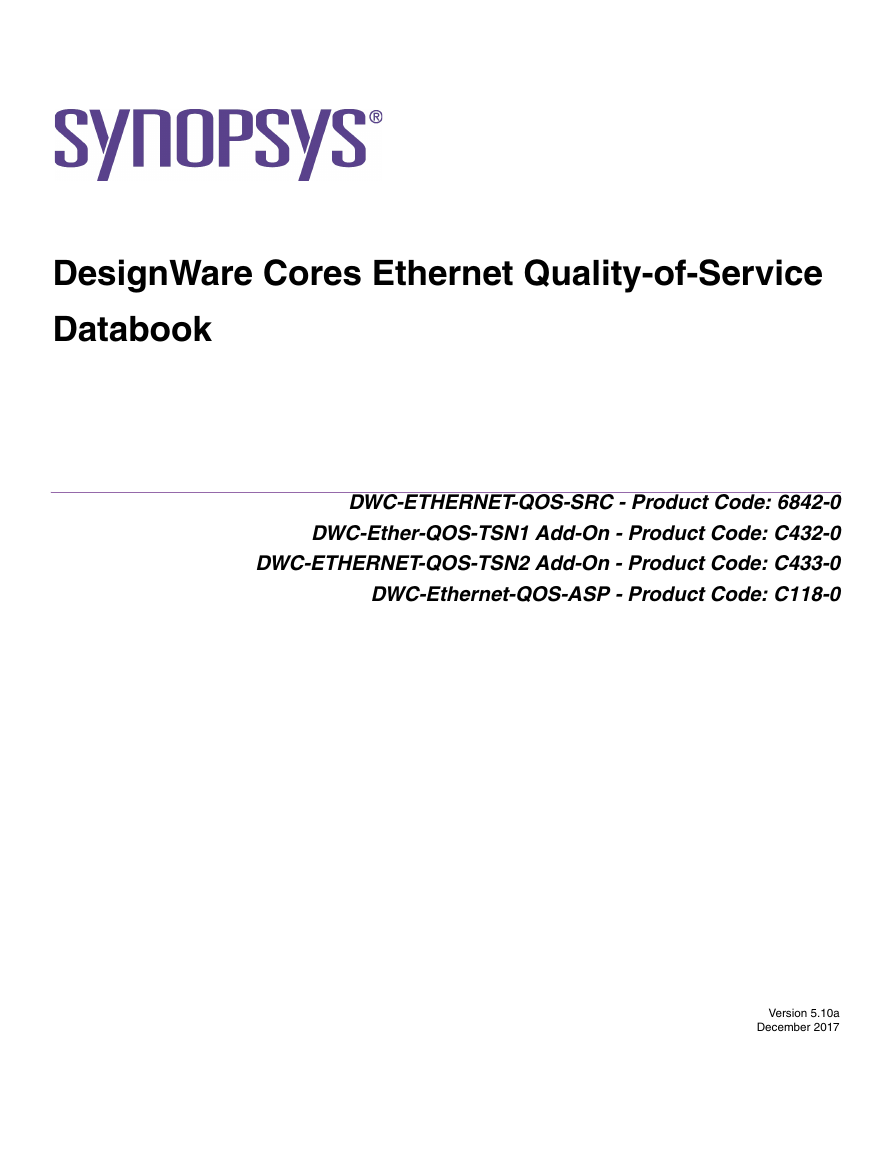
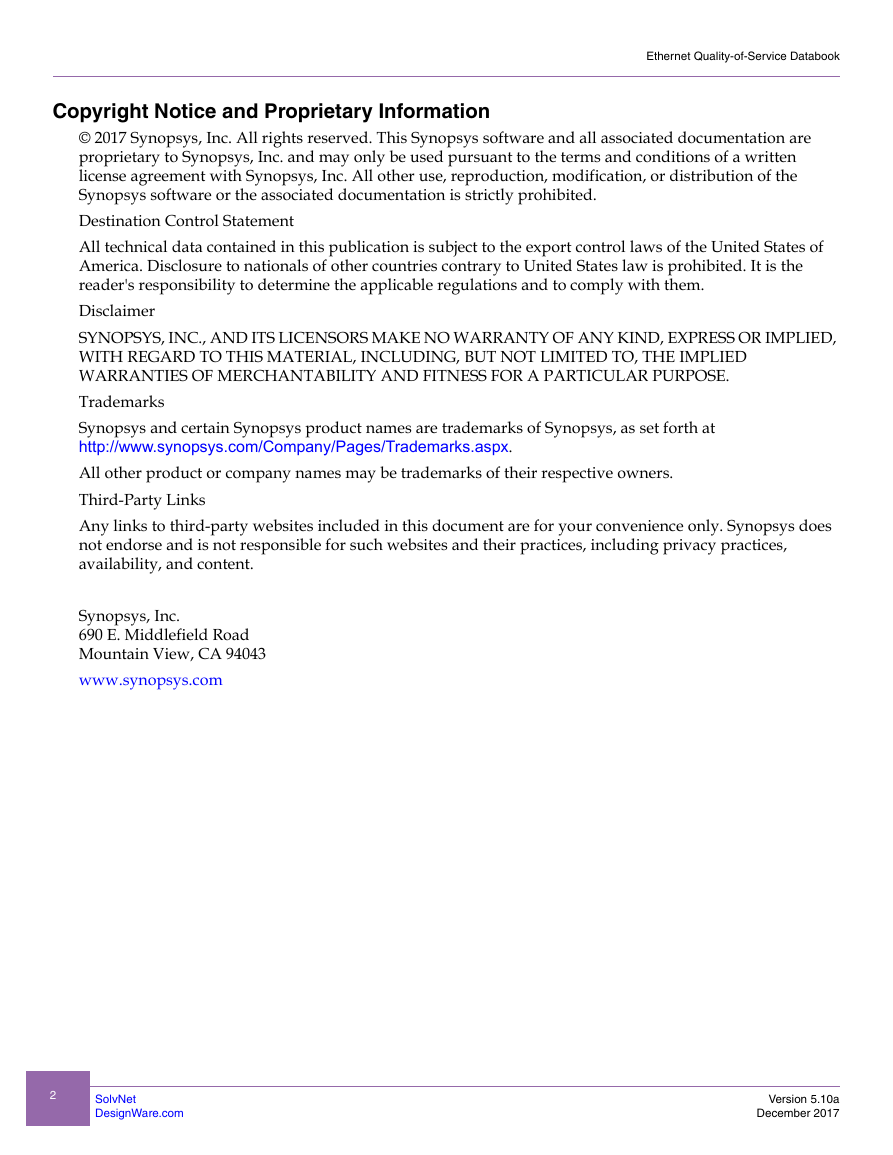
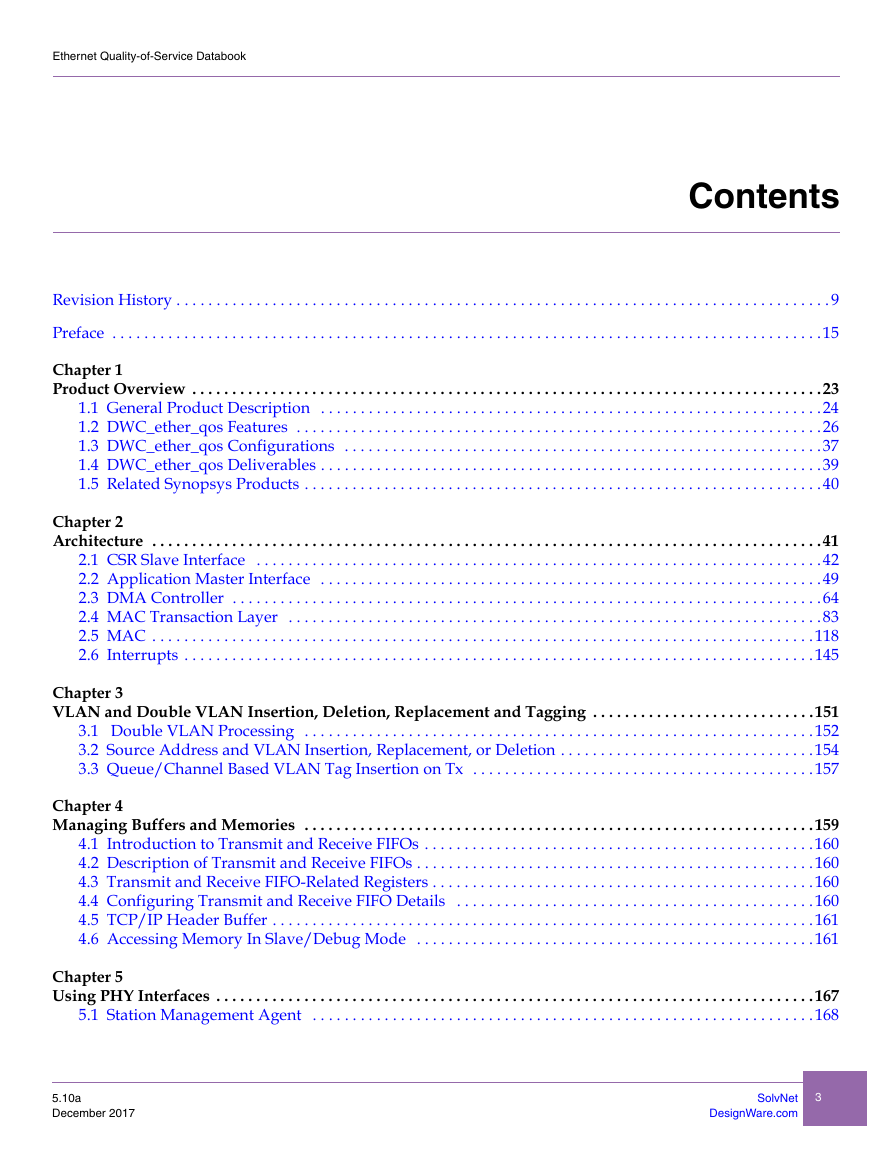
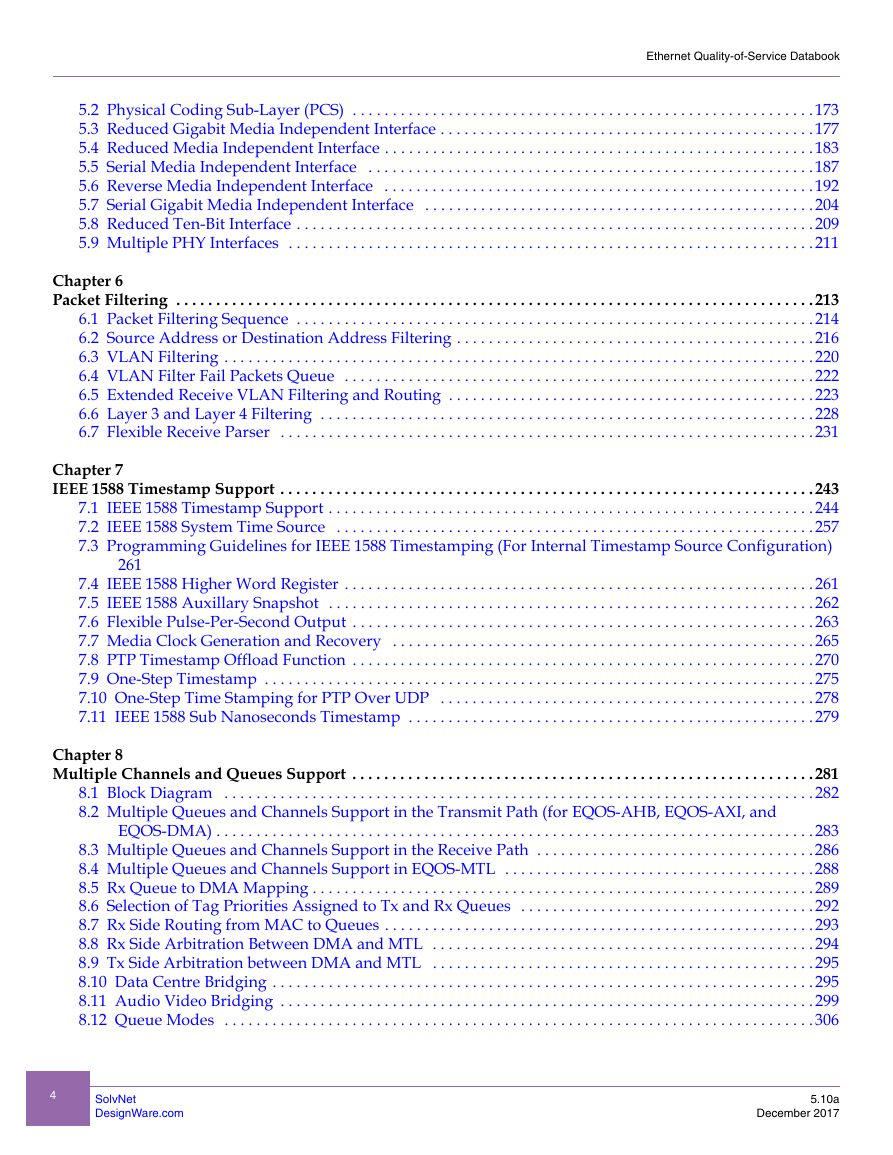
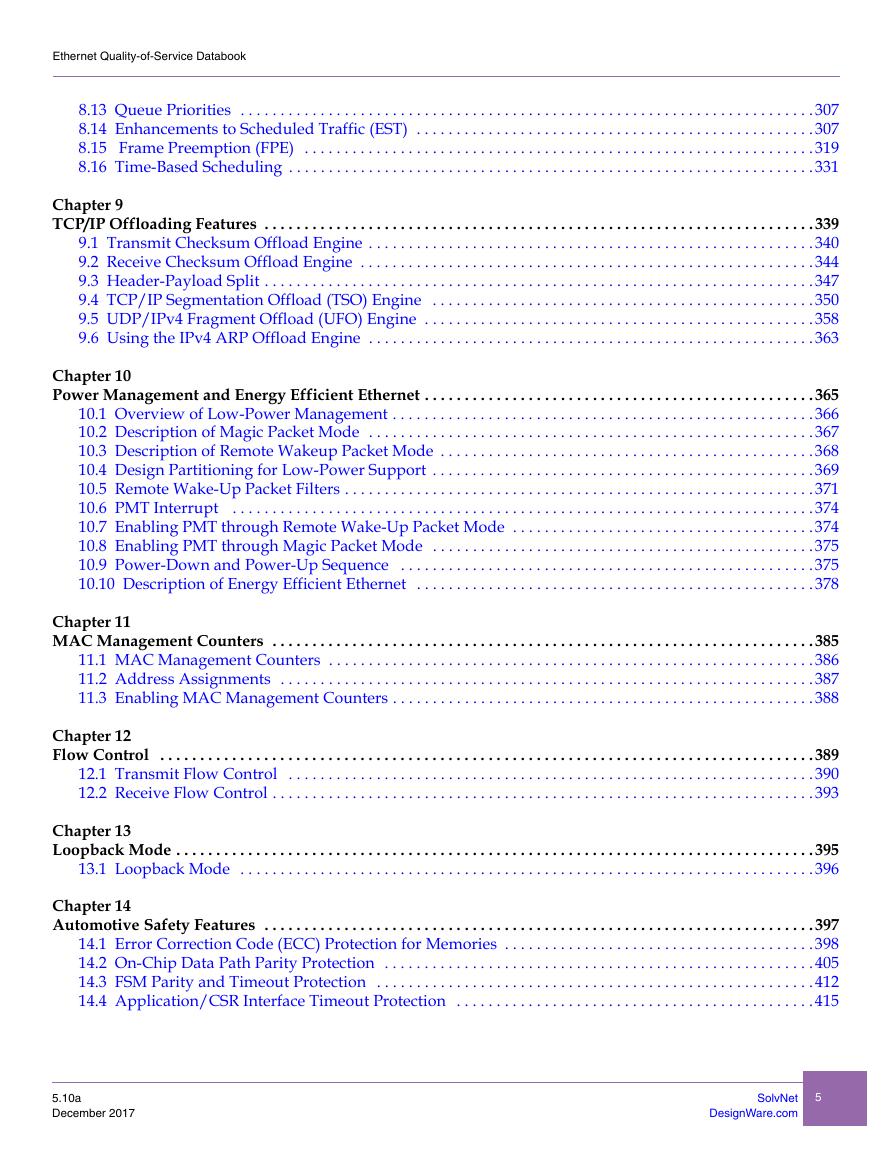
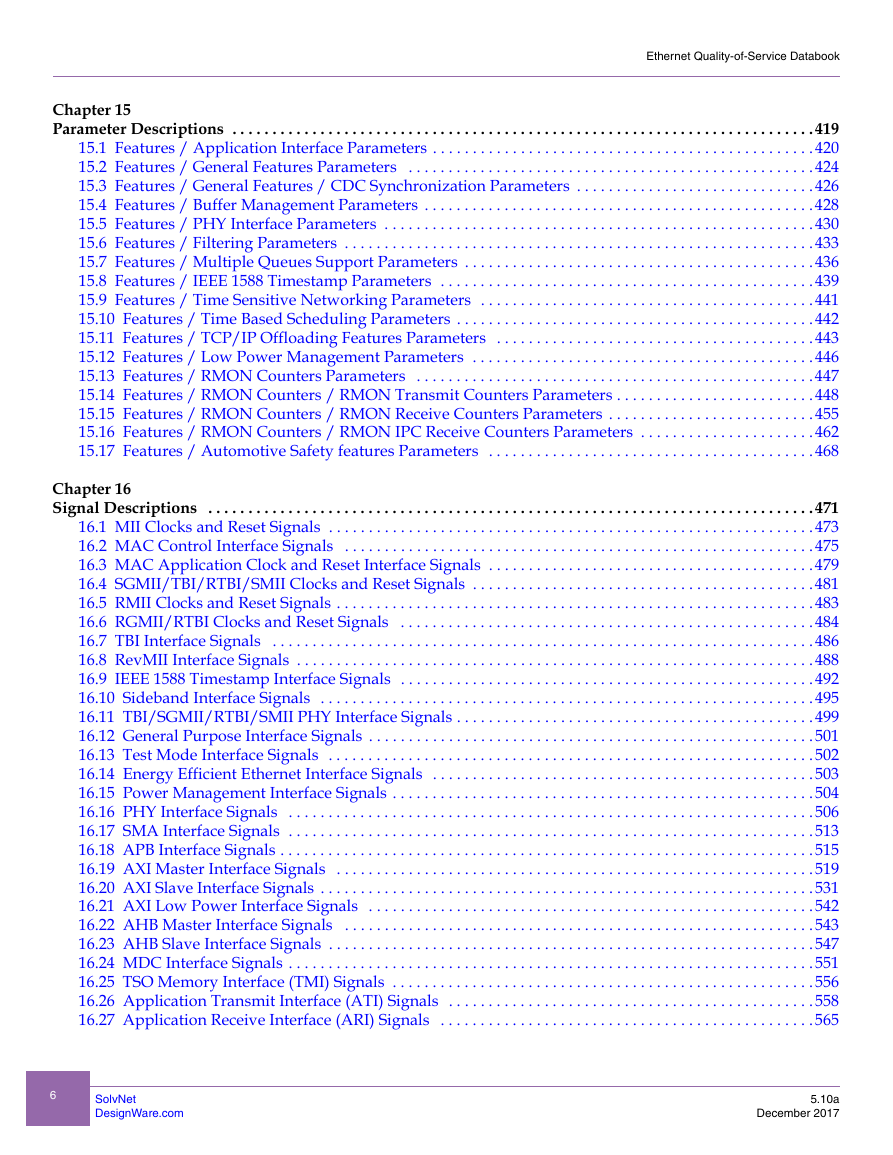
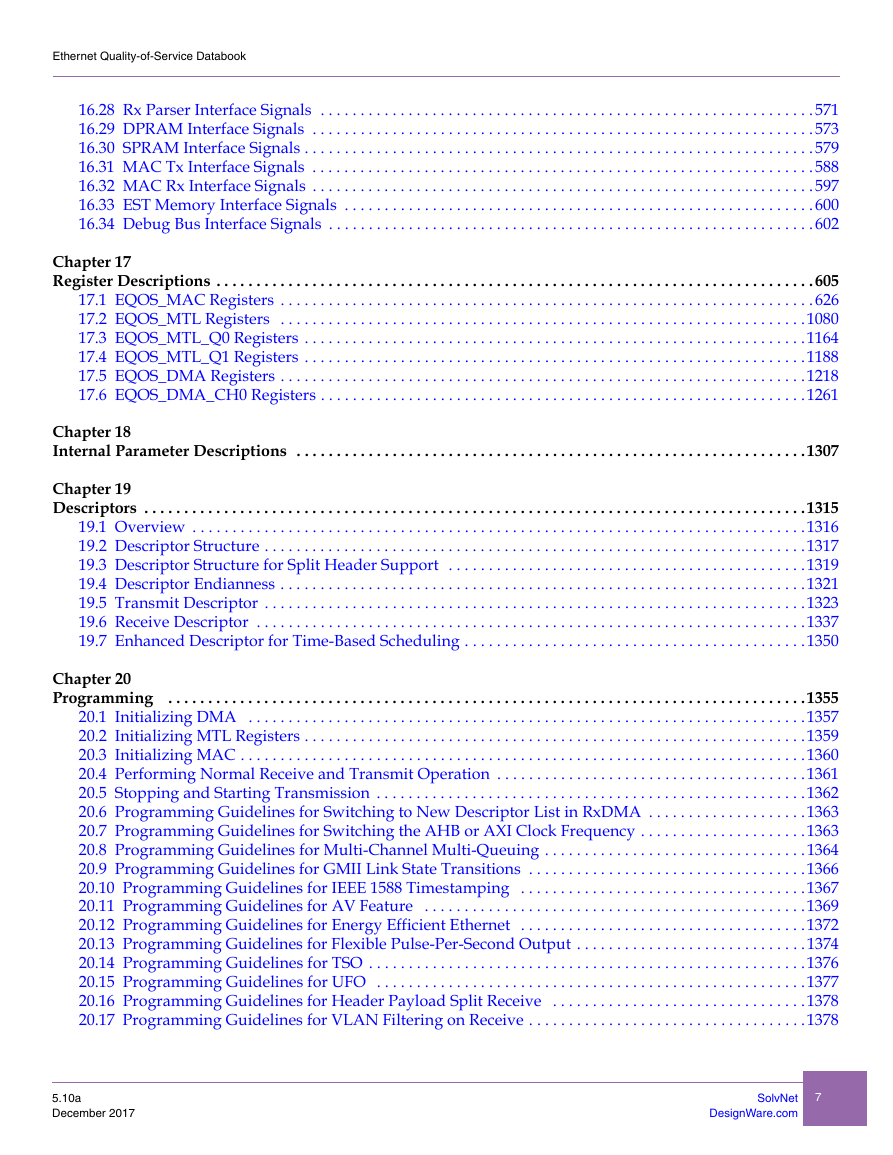
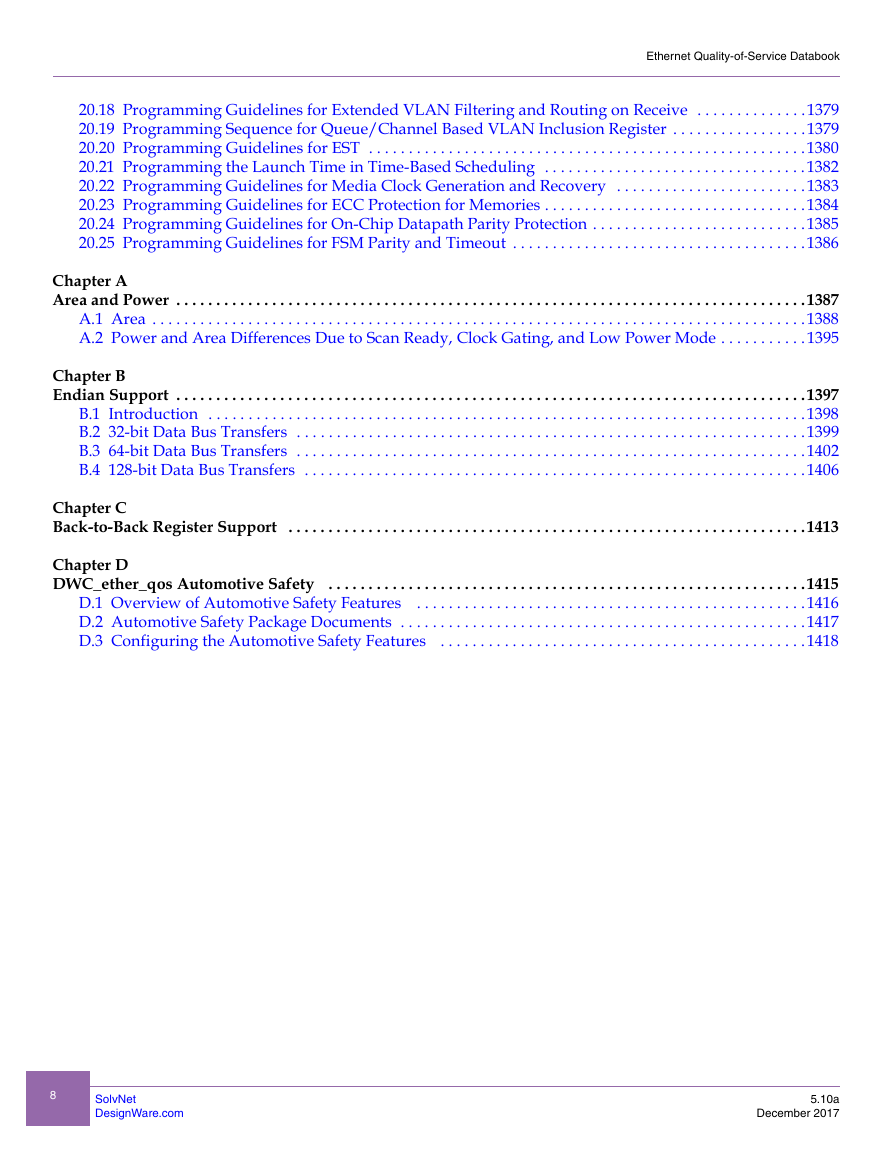








 2023年江西萍乡中考道德与法治真题及答案.doc
2023年江西萍乡中考道德与法治真题及答案.doc 2012年重庆南川中考生物真题及答案.doc
2012年重庆南川中考生物真题及答案.doc 2013年江西师范大学地理学综合及文艺理论基础考研真题.doc
2013年江西师范大学地理学综合及文艺理论基础考研真题.doc 2020年四川甘孜小升初语文真题及答案I卷.doc
2020年四川甘孜小升初语文真题及答案I卷.doc 2020年注册岩土工程师专业基础考试真题及答案.doc
2020年注册岩土工程师专业基础考试真题及答案.doc 2023-2024学年福建省厦门市九年级上学期数学月考试题及答案.doc
2023-2024学年福建省厦门市九年级上学期数学月考试题及答案.doc 2021-2022学年辽宁省沈阳市大东区九年级上学期语文期末试题及答案.doc
2021-2022学年辽宁省沈阳市大东区九年级上学期语文期末试题及答案.doc 2022-2023学年北京东城区初三第一学期物理期末试卷及答案.doc
2022-2023学年北京东城区初三第一学期物理期末试卷及答案.doc 2018上半年江西教师资格初中地理学科知识与教学能力真题及答案.doc
2018上半年江西教师资格初中地理学科知识与教学能力真题及答案.doc 2012年河北国家公务员申论考试真题及答案-省级.doc
2012年河北国家公务员申论考试真题及答案-省级.doc 2020-2021学年江苏省扬州市江都区邵樊片九年级上学期数学第一次质量检测试题及答案.doc
2020-2021学年江苏省扬州市江都区邵樊片九年级上学期数学第一次质量检测试题及答案.doc 2022下半年黑龙江教师资格证中学综合素质真题及答案.doc
2022下半年黑龙江教师资格证中学综合素质真题及答案.doc